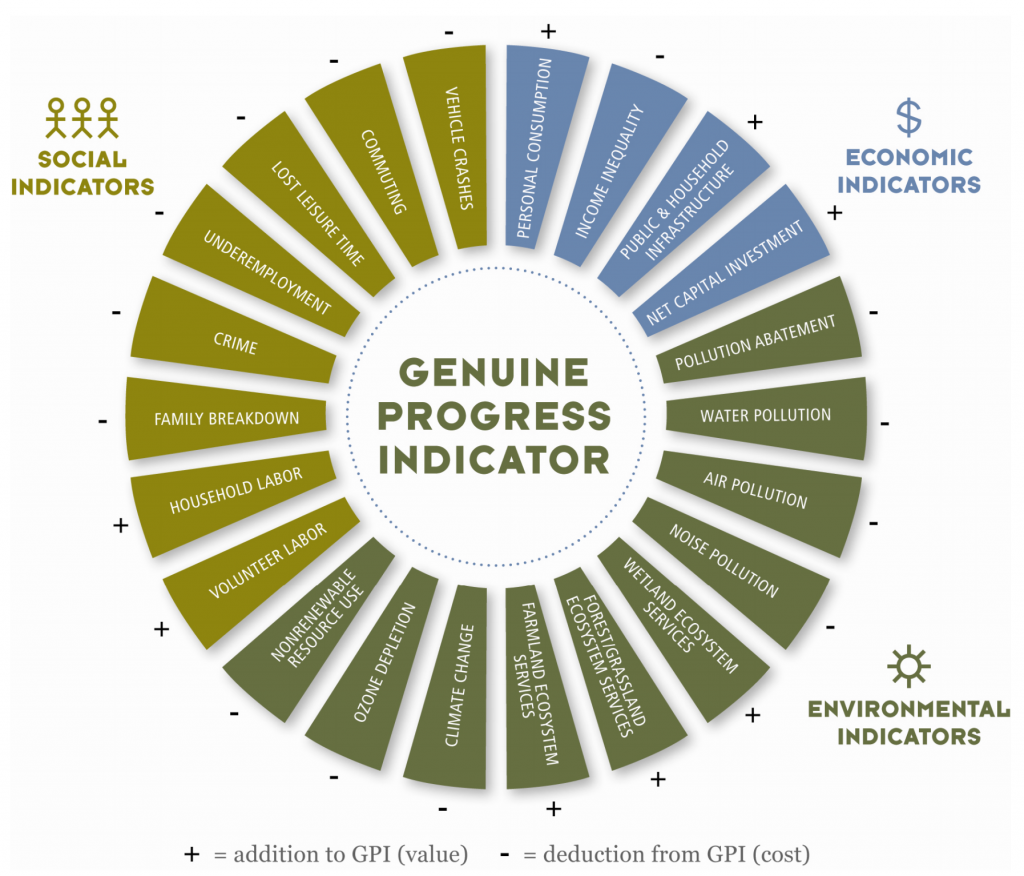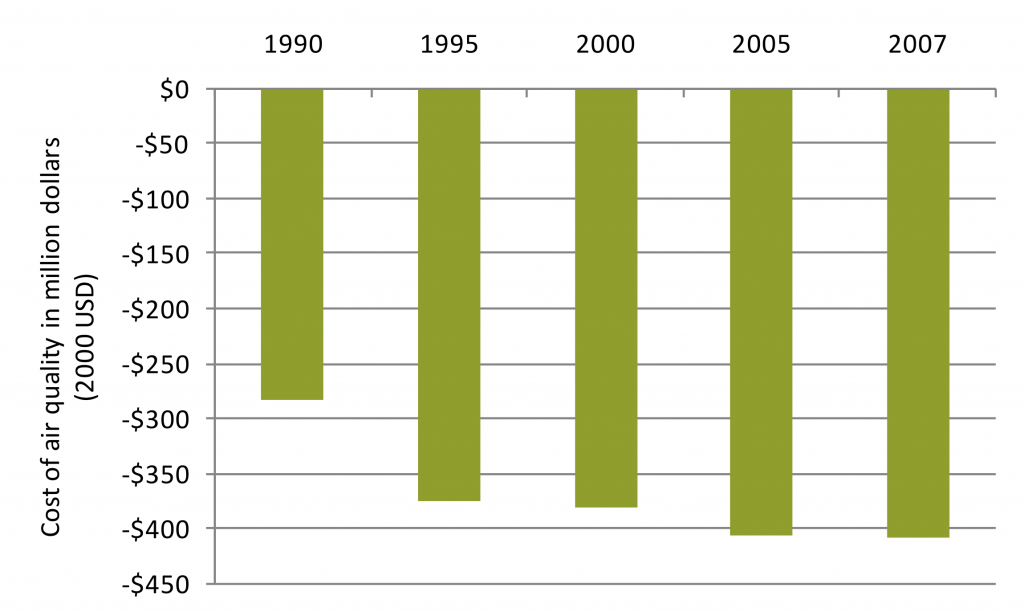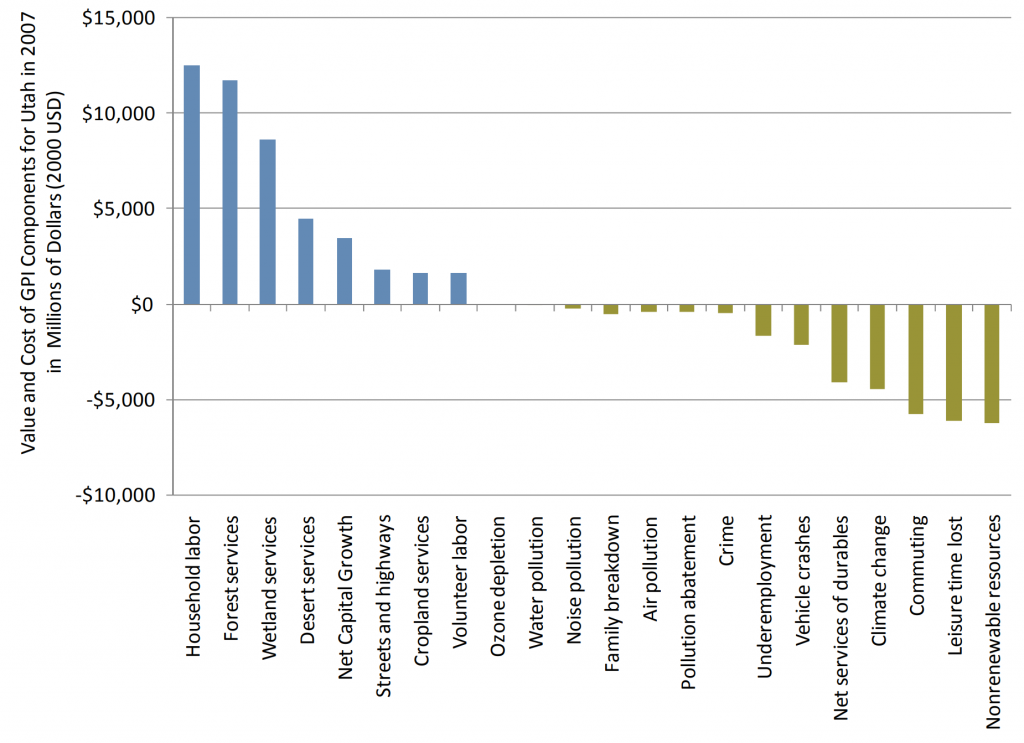Measuring quality of life, not just market transactions
Traditional metrics for economic progress, like the Gross Domestic Product (GDP), measure monetary transactions. But not all monetary transactions are good for our societal well-being. And many factors that improve our quality of life, such as volunteer work and the benefits of a clean environment, aren’t measured because they aren’t bought or sold.
The Genuine Progress Indicator (GPI) provides us with an alternative measure that offers a more holistic view of our quality of life. By placing a dollar value on many factors that contribute to and detract from our well-being (economic, societal, and environmental), the GPI provides a useful tool to look at the trade-offs policy makers face when making decisions about using any resources and planning for the future.
Not sure about GPI versus GDP? Read more below or check out the April 2014 NY Times article: Hey USA! We’re Not #1!
Read the results in one of our documents. Please click to download:
- The 2 page HANDOUT
- The 14 page EXECUTIVE SUMMARY
- The 136 page FULL REPORT (2.5 Mb)
- The Data Spreadsheet (2.1 Mb)
- Click to watch our GPI video presentation
& informative indexed Q&A video!
Copyright © 2011 Günseli Berik and Erica Gaddis
Suggested citation: Berik, G. and E. Gaddis. 2011. The Utah Genuine Progress Indicator (GPI), 1990 to 2007: A Report to the People of Utah, Utah Population and Environment Council, Available at: http://utahpopulation.org/wp-content/uploads/2014/11/Utah_GPI__Report_v74_withabstract.pdf
See also the results graphs at the bottom of this page.
About the Utah GPI report:
Since the late 1980s, economists have developed GPI methodologies to study trends in well-being of countries around the globe. The methodologies have also been applied on local levels, with studies in Vermont, Ohio, Minnesota, the San Francisco Bay Area, and Maryland. The Utah GPI report is the first of its kind in the intermountain west. This assessment reveals trends between 1990 and 2007, the latest year with available data. The Utah GPI report was funded by us, Utah Population and Environment Council as a part of our ongoing Utah Vital Signs project.
GPI seeks to address GDP shortcomings:
The GPI is an alternative to the Gross Domestic Product (GDP) that seeks to measure the economic well-being of society. The shortcomings of GDP in measuring wellbeing are well-known. The GDP is a tally of all the monetary transactions that have taken place in the sale of final goods and services in a given year. As such, it does not take into account the level of income inequality and the non-monetary activities that contribute to our well-being, it does not differentiate between the quality of our spending (i.e. whether or not they are a net addition to our well-being), and it does not account for the depletion of natural resources in the course of production of goods and services. These and other weaknesses of GDP have been a source of criticism since the late 1960s and have fueled a search for alternative measures. These shortcomings are detailed in a 2009 report by the Commission on the Measurement of Economic Performance and Social Performance headed by Nobel Laureate Joseph Stiglitz of Columbia University.
What Does the GPI do?
GPI takes personal consumption level as its starting point, from which a number of adjustments are made: the level of income distribution is factored in; the value of housework, volunteer work, and the services of the ecosystem (wetlands, farmland, forests) are added; and a host of costs, such as the costs of crime, commuting, underemployment, lost leisure time, pollution, the loss of natural resource function are deducted. When this methodology is applied to the U.S., the real GPI is found to have grown more slowly over the 1950 – 2004 period compared to the growth in real GDP, both overall and in per capita terms. Per capita real GPI is stagnant, particularly after 1980, suggesting that the additional expenditures and costs of economic growth are offsetting the additional benefits associated with increased personal consumption, housework and volunteer work and capital services.
Is Utah Making Real Progress?
In January 2011, the Utah Population and Environment Council released to the public the results of Utah Genuine Progress Indicator (GPI) study. In short, between 1990 and 2007 Utah made genuine improvements in quality of life. But there are indications that several critical contributors to our well-being are eroding. Specifically, erosion in the social and environmental components are offsetting the economic gains registered by Utah’s GPI.
For More Information:
Download and read the study or our summaries and watch the videos to learn more! Two of the many bar graphs / charts results are below:


